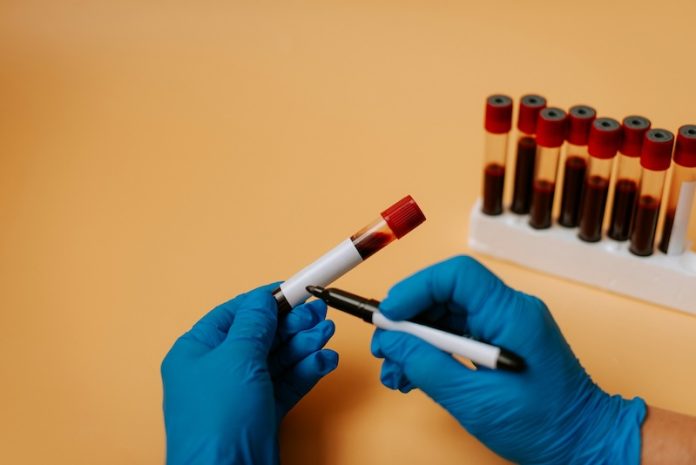
Scientists at the University of California San Diego have discovered that high levels of a specific enzyme, PHGDH, in the blood might serve as an early warning sign for Alzheimer’s disease.
This finding could offer a new way to detect the disease before noticeable cognitive symptoms appear, giving doctors and researchers a valuable tool for early intervention.
PHGDH is a key enzyme involved in producing serine, an amino acid crucial for brain function.
By analyzing brain tissue, the researchers found that the gene responsible for PHGDH production was more active in individuals at various stages of Alzheimer’s, even in those who showed no cognitive symptoms yet exhibited early signs of the disease in their brains.
This suggests that PHGDH activity might increase as Alzheimer’s develops.
The study also raises concerns about the use of serine supplements, often marketed to improve memory and cognitive health. Since PHGDH drives serine production, the increased enzyme activity in Alzheimer’s patients suggests their brains might already be producing more serine than necessary.
Adding extra serine through supplements could be ineffective or even harmful in these cases. This challenges earlier theories suggesting that reduced PHGDH activity and lower serine levels might contribute to Alzheimer’s, leading to ongoing clinical trials exploring serine as a treatment.
To explore this connection further, the researchers analyzed data from brain tissue donated by individuals in four separate research cohorts, each with 40 to 50 participants aged 50 and older.
These groups included people diagnosed with Alzheimer’s, individuals with no cognitive symptoms but early Alzheimer’s-related changes in their brains, and healthy controls.
The results consistently showed that PHGDH activity was higher in Alzheimer’s patients and in the asymptomatic group compared to the healthy controls. Moreover, the more advanced the disease, the greater the PHGDH activity.
This pattern wasn’t limited to human studies. In two different mouse models of Alzheimer’s disease, the researchers observed a similar increase in PHGDH activity.
Furthermore, participants with worse cognitive test scores also had higher PHGDH levels in their brains, strengthening the connection between this enzyme and cognitive decline.
The findings caution against simplistic approaches to treating Alzheimer’s. While some have proposed serine supplementation as a potential remedy, the study highlights the importance of understanding the underlying biology before pursuing such treatments.
The researchers emphasize that increased PHGDH expression likely means the brain is already producing more serine, which could make additional supplementation unnecessary or counterproductive.
The research also opens the door to broader questions about Alzheimer’s prevention and treatment. For example, studies have suggested links between Alzheimer’s and the herpes virus, as well as the potential benefits of enhancing the brain’s ability to clear waste products associated with the disease.
Other research highlights the possible role of diet in brain health, such as cranberries boosting memory or specific antioxidants reducing dementia risk.
This study, led by Sheng Zhong and published in Cell Metabolism, underscores the complexity of Alzheimer’s disease and the need for careful, evidence-based approaches to its treatment.
By identifying PHGDH as a potential early marker for Alzheimer’s, the researchers provide a new avenue for detecting and understanding this devastating condition.
If you care about Alzheimer’s, please read studies about Vitamin D deficiency linked to Alzheimer’s, vascular dementia, and Oral cannabis extract may help reduce Alzheimer’s symptoms.
For more information about brain health, please see recent studies about Vitamin B9 deficiency linked to higher dementia risk, and results showing flavonoid-rich foods could improve survival in Parkinson’s disease.
Copyright © 2024 Knowridge Science Report. All rights reserved.



